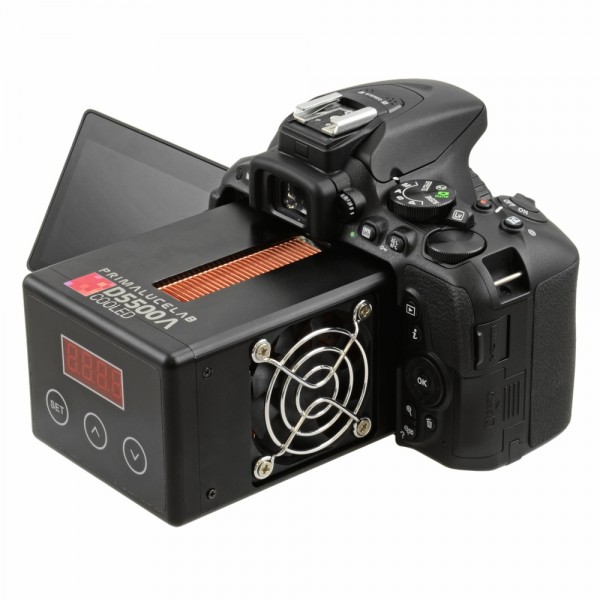The cooler itself is a Peltier capable of refrigerating the sensor down to -27 degrees Celisus (-16.6F). A Peltier cooler uses the the Peltier effect to rapidly pump heat away from one side of the cooler to the other side, where there's a heatsink and fan to dissipate the heat. Peltier coolers are incredibly power inefficient, but they're compact, and unlike standard vapour-compression refrigeration have no moving parts or circulating liquid. Back in the olden days of overclocking Peltier coolers were all the rage, but the massive power requirements?provided by an expensive, separate power supply?made them unwieldy.
There are some buttons on the back of the cooler that let you adjust the target temperature. Since the refrigeration could cause the front filter to dew up, especially in high-humidity environments, the modified camera also includes an anti-dewing system that heats it up slightly. One small issue with PrimaLuce's camera, though: the Peltier requires an external 12V 3A power source, which isn't provided. Presumably you'll need to carry a big battery with you, or be tethered to your car or house.
Look closely (you may want to click the image to zoom in) and you'll see a ton of noise (red, green, blue speckles) on the right hand side.
The graph on the left shows you the effect of the modified filter on the cooled camera, making it more sensitive to certain frequencies of light.







 Reply With Quote
Reply With Quote

Bookmarks